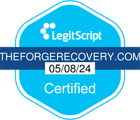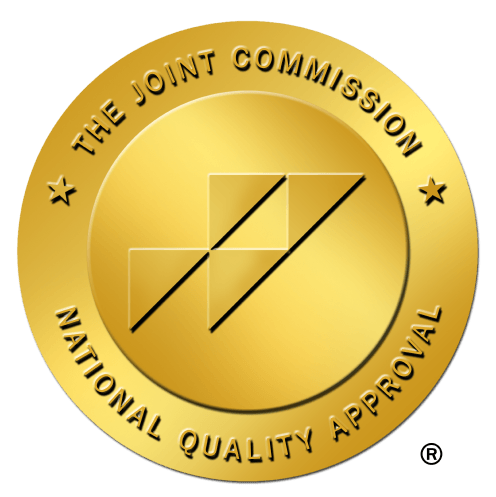Dual Diagnosis: What It Is, Common Symptoms, & How It's Treated


Living with dual diagnosis — a combination of substance use and mental health disorders — is a weighty struggle. The physical and psychological symptoms can be crippling to not just your day-to-day, but also your relationships, work, and other aspects of life. But you’re not alone, and treatment is available. Learn more about the symptoms, causes, and treatment options for dual diagnosis, and call The Forge Recovery Center today if you or a loved one are in need of end-to-end care and support.
What Is Dual Diagnosis?
Dual diagnosis refers to the co-occurrence of a substance use disorder and a mental health disorder in an individual. This means that someone with dual diagnosis is dealing with both conditions simultaneously. It can be challenging to diagnose and treat because the symptoms of one disorder can often mask or exacerbate the symptoms of the other.
Dual diagnosis requires a comprehensive treatment approach that addresses both the substance use disorder and the mental health disorder to effectively help the individual achieve recovery and stability.
Symptoms of Dual Diagnosis
Symptoms of dual diagnosis are mixed and typically include a combination of both substance use and mental health disorder symptoms. These symptoms can range from the physical withdrawal signs indicative of addiction to the persistent feelings of sadness or anxiety brought on by many mental health disorders. Here’s an overview of the symptoms of dual diagnosis:
Signs of Substance Use Disorder
When it comes to substance use disorder, you may notice increased tolerance to a substance, leading you to consume more for the same effects. Physical withdrawal symptoms can also occur when you try to cut back. You might experience neglecting responsibilities or engaging in risky behaviors due to substance use. Failed attempts at quitting or controlling your usage are common signs as well.
Signs of a Mental Health Disorder
In dealing with a mental health disorder, you could face persistent feelings of sadness, anxiety, or hopelessness that affect your daily life significantly. Changes in sleep patterns, appetite, and energy levels might indicate an underlying mental health issue. You may also struggle with concentration, decision-making, and memory.

Are You Struggling with Mental Health or Addiction?
We Can Help. Call Us Now!
CALL: 877-839-1772
Dual Diagnosis Treatment Pathways
If diagnosed with both a mental health disorder and SUD, you’ll likely receive a combination of therapy and medication as part of your treatment plan. This can be administered by a therapist and psychiatrist, or at an inpatient or outpatient mental health treatment center. Here’s a more in-depth overview of treatment options for dual diagnosis:
Therapy
When seeking treatment for dual diagnosis, therapy plays a crucial role in your recovery journey. Cognitive Behavioral Therapy (CBT) is a widely used approach that helps you identify and modify negative thought patterns. Through CBT, you can learn coping strategies to manage both mental health issues and addiction effectively.
Dialectical Behavior Therapy (DBT) is another effective therapy option for individuals with dual diagnosis. DBT focuses on teaching you mindfulness, emotion regulation, and interpersonal effectiveness skills. By incorporating DBT into your treatment plan, you can develop healthier ways of coping with stress and intense emotions.
Medication
In some cases, medication may be included in your treatment plan to address specific symptoms related to mental health disorders or substance abuse. Medications such as antidepressants, antipsychotics, or mood stabilizers may be prescribed to help manage symptoms like depression, anxiety, or mood swings effectively.
Support Groups
Engaging in support groups can provide you with a sense of community and understanding as you navigate the challenges of dual diagnosis. Support groups offer a safe space where you can share your experiences, receive encouragement from others facing similar struggles, and gain valuable insights into coping mechanisms that have worked for them.
Mental Health & Addiction Treatment Centers
When considering treatment options for dual diagnosis, mental health and addiction treatment centers offer specialized care tailored to meet your unique needs. Inpatient care provides intensive support in a structured environment, offering around-the-clock supervision, therapy sessions, and medical assistance to help you stabilize and begin your recovery journey.
On the other hand, outpatient care allows you to receive treatment while maintaining your daily responsibilities. Outpatient programs offer flexibility by providing therapy sessions, medication management, and support group meetings at scheduled times throughout the week. This option enables you to continue working or attending school while receiving the necessary treatment for dual diagnosis.
What Causes Dual Diagnosis?
Mental health and substance use disorders are largely thought to stem from genetic predispositions, alongside certain environmental triggers. Let’s explore these causes further:
Family History
When it comes to dual diagnosis, understanding your family history is crucial. Genetic predispositions play a significant role in the development of dual diagnosis. Your family's mental health history can provide valuable insights into your own susceptibility to substance abuse and mental health disorders. Consider seeking professional guidance to explore how your familial background may influence your current mental well-being.
Environmental Triggers
Environmental factors can also contribute to the onset of dual diagnosis. Traumatic experiences, such as abuse or neglect, can increase vulnerability to mental health issues and substance misuse. Exposure to stressful environments or peer pressure may further exacerbate these conditions, leading to a complex interplay between genetics and surroundings. Reflect on your environment and identify potential triggers that could impact your mental health negatively, and be sure to seek support to address these triggers effectively.
Are You Struggling with Mental Health or Addiction?
We Can Help. Call Us Now!
CALL: 877-839-1772
How Mental Health & Substance Use Disorders Interact
Mental health and substance use disorders can exacerbate each other, and interact in damaging ways. Individuals struggling with depression may turn to alcohol for comfort, for example, which can lead to dependence and addiction. Continued substance use can also cause chemical imbalances in your brain, potentially contributing to mental health struggles. Here’s a deeper summary of how the two interact with each other:
When Mental Health Disorders Drive Addiction
When mental health disorders go untreated, you may turn to substances to cope with the symptoms. This can lead to self-medication and eventually develop into a full-blown addiction. Seeking professional help for your mental health issues is crucial in preventing the progression towards substance abuse and addiction:
Self-medicating with substances like alcohol or drugs can temporarily alleviate symptoms of anxiety or depression.
Over time, this coping mechanism can spiral out of control, causing dependence and addiction.

When Addiction Contributes to Mental Health Disorders
On the other hand, substance use disorders can directly impact your mental health, exacerbating existing conditions or triggering new ones. When you are addicted to substances, they can alter your brain chemistry and lead to various mental health issues:
Prolonged substance abuse can cause chemical imbalances in the brain, resulting in mood disorders like depression or anxiety.
The cycle of addiction often fuels feelings of guilt, shame, and low self-esteem, further deteriorating your mental well-being.
Diagnosis Challenges
When it comes to dual diagnosis, accurate diagnosis is crucial for effective treatment. Misdiagnosis can lead to inappropriate treatments and worsen both mental health and substance use disorders. Knowing this, it's vital to address both disorders simultaneously for a precise diagnosis and better outcomes.
Proper assessment by qualified professionals is essential for accurate diagnosis.
Comorbidity makes diagnosis challenging due to overlapping symptoms of mental health and substance use disorders.
Integrated treatment plans cater to the unique needs of individuals with dual diagnosis.
Regular monitoring and adjustments in treatment are necessary to ensure effectiveness.
Are You Struggling with Mental Health or Addiction?
We Can Help. Call Us Now!
CALL: 877-839-1772
Dual Diagnosis Prevalence
To give you an idea of the widespread impact of dual diagnosis, we’ve gathered some of the latest data points related to its prevalence:
In the United States, approximately 7.7 million adults are affected by dual diagnosis
One study reported that 21% of participants had a dual diagnosis (277 out of 1,325 participants)
Another study found that the lifetime prevalence of any psychiatric disorder was 44% for people with an alcohol disorder and about 64% among people with other substance use disorders.
Closing Thoughts
You've now gained insights into dual diagnosis, understanding its symptoms, treatment pathways, causes, and prevalence. Recognizing the intricate relationship between mental health and substance use disorders is crucial in navigating the challenges of dual diagnosis. By shedding light on this topic, you are better equipped to identify and support individuals facing these complex conditions.
As you continue your journey to comprehend dual diagnosis, remember that seeking professional help and fostering a supportive environment is key. Educating yourself and others about dual diagnosis can lead to increased awareness and empathy, ultimately contributing to a more inclusive and understanding society. Your efforts matter in creating a positive impact on those affected by dual diagnosis.
Are You Struggling with Mental Health or Addiction?
We Can Help. Call Us Now!
CALL: 877-839-1772
Dual Diagnosis Treatment at The Forge Recovery Center: Start Healing Today
We understand the difficulties of dual diagnosis, from the layered symptoms to difficulties in diagnosis, and are here to remind you that help is available. At The Forge Recovery Center, our team of both mental health and treatment experts is ready to support you every step of the way with a range of evidence-based therapies. If you or a loved one are showing signs of multiple disorders and require professional treatment, contact The Forge Recovery Center today — your guide toward sobriety and mental well-being.



